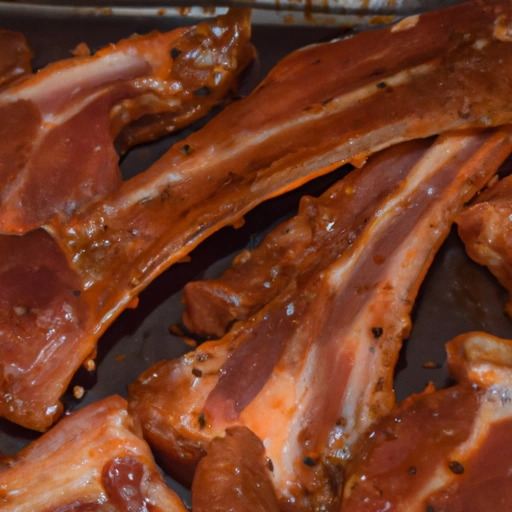Spareribs
Description

Spareribs are a cut of pork that comes from the lower portion of the pig, specifically the belly and breastbone, behind the shoulder. They are a popular choice in culinary traditions around the world due to their rich flavor and tender meat when cooked properly. Spareribs consist of long bones with meat in between and are known for their marbling, which contributes to their succulence.
Common uses
Spareribs are commonly used in dishes that require slow cooking methods such as smoking, braising, or barbecuing. They are a popular choice for gatherings and family meals, often served as a main dish.
Nutritional value
Calories
A typical serving of spareribs (3 oz or approximately 85g) contains around 250 to 300 calories.
Protein
That same serving size generally offers about 20 to 25 grams of protein.
Fat
Spareribs are relatively high in fat, with about 20 grams of fat per serving.
Carbohydrates
They are low in carbohydrates, usually containing less than 1 gram per serving unless prepared with sugary sauces or rubs.
Vitamins
Spareribs provide a good source of B vitamins, particularly vitamin B6 and B12, which are vital for energy metabolism and brain health.
Minerals
They also contain essential minerals like zinc, selenium, and phosphorus, important for various body functions.
Health benefits
When consumed in moderation as part of a balanced diet, spareribs can contribute to your intake of essential nutrients like protein and minerals.
Potential risks
However, due to their high fat content, particularly saturated fat, excessive consumption of spareribs can lead to health risks such as increased cholesterol levels and heart disease. It's also important to consider the preparation method, as barbecuing and smoking at high temperatures can produce harmful compounds.
Common recipes
Spareribs are featured in recipes such as American BBQ ribs, Chinese-style spare ribs, and European braised ribs.
Cooking methods
Common cooking methods include grilling, smoking, roasting, and slow-cooking to break down the tough connective tissues and achieve a tender result.
Pairing with other ingredients
Spareribs can be paired with a variety of flavors, from smoky and spicy sauces to sweet and sour glazes. They also go well with side dishes like coleslaw, mashed potatoes, and cornbread.
Summary
In summary, spareribs are a versatile and satisfying cut of pork that can be the centerpiece of many delicious dishes. With their rich flavor and ability to absorb a range of seasonings and sauces, they offer home cooks and professional chefs alike an opportunity to showcase their culinary skills. While there are health considerations to keep in mind, spareribs can be enjoyed as an occasional indulgence in a balanced diet.